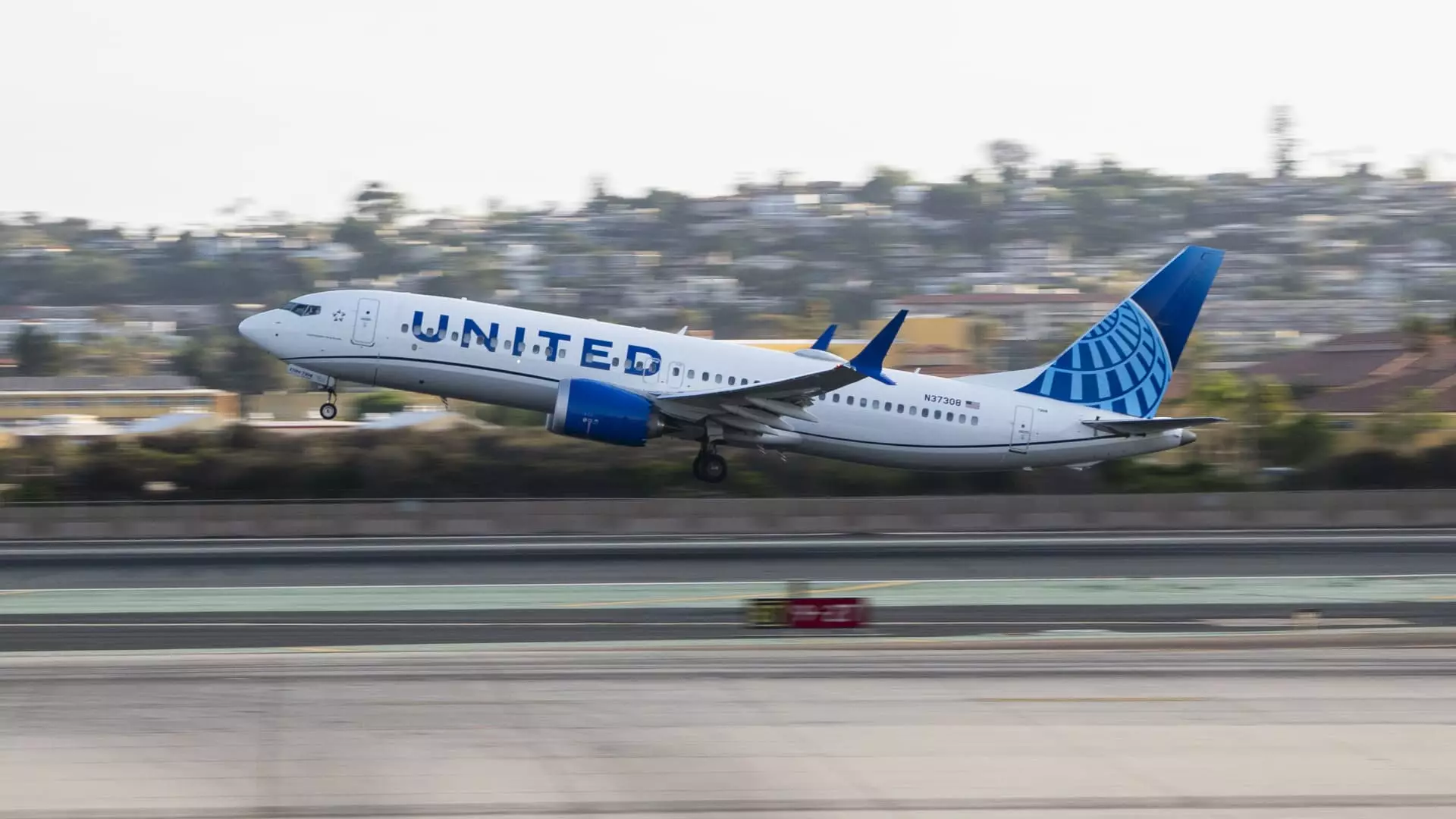In a significant announcement on Tuesday, United Airlines unveiled a robust $1.5 billion share buyback program, marking a decisive step towards financial recovery and shareholder value enhancement following the pandemic-induced economic downturn. The carrier’s confidence is further underscored by reporting higher-than-anticipated earnings during the critical summer travel season, coupled with a promising outlook for the concluding months of the year. Expectations are set for an adjusted earnings per share (EPS) ranging between $2.50 and $3.00 in the fourth quarter, a notable improvement compared to last year’s $2.00 per share and exceeding the analysts‘ forecast of $2.68 as per LSEG calculations.
United’s financial results for the third quarter illustrate a compelling narrative of resilience. The airline reported an adjusted EPS of $3.33, outstripping market predictions of $3.17, while total revenue reached $14.84 billion, surpassing the projected $14.78 billion. This performance reflects United’s strategic maneuvering in response to shifting market dynamics and recovery trends within the aviation sector.
The initiation of the share buyback—the first for United since the onset of the COVID-19 pandemic—is particularly noteworthy. The airline, like its peers, faced considerable restrictions on financial maneuvers during the pandemic, where it received over $50 billion in government support aimed at stabilizing the industry during prolonged travel restrictions. This period not only halted share buybacks but also complicated efforts to maintain financial equilibrium.
Southwest Airlines had previously announced a $2.5 billion buyback, signaling a sector-wide movement toward restoring shareholder confidence. United Airlines’ CEO Scott Kirby emphasized that while this share repurchase program serves as a mark of recovery, the investment in employees and the business remains an inseparable priority. This dual commitment is critical as the airline seeks to foster loyalty among its workforce while also appealing to investors eager for returns.
United’s recent results reveal a mixed yet optimistic picture of its operations. The airline’s third-quarter revenue reflects a modest 2.5% increase year-over-year, yet net income dipped by 15% compared to the previous year, raising questions about long-term profitability in a competitive landscape. However, the positive story is buoyed by signs of improving domestic unit revenue, specifically during August and September, as airlines globally sought to adjust their flight capacities in light of suppressed fare prices.
The carrier reported a 4.1% increase in capacity during the third quarter, which is indicative of a broader strategy to reclaim lost ground in the travel market. United noted that its corporate revenue experienced a noteworthy rise of 13%. There was also a 5% uptick in premium revenue, largely driven by business-class ticket sales, while sales of its economy-class offerings rose impressively by 20%. These figures reflect a diversified revenue strategy aimed at catering to different market segments, showcasing United’s adaptive response to evolving passenger preferences.
Looking forward, United Airlines is gearing up for an ambitious expansion plan that includes new international routes to Mongolia, Senegal, Spain, and Greenland—destinations that align with the growing demand for global travel. This expansion reflects the airline’s proactive approach to capitalize on recovering travel trends and expanding its market reach, a commendable strategy in an industry navigating post-pandemic realities.
Yet, the airline’s executives are aware that future growth is contingent on various external factors, including ongoing issues with aircraft production at Boeing, particularly in light of a recent machinist strike that has temporarily idled several factories. Analysts are expected to probe United’s leadership during their upcoming call regarding the sustainability of demand heading into 2025 and the potential impact of these production delays on operational capacity.
United Airlines is at a critical juncture, balancing immediate financial revitalization through share buybacks and expanded operations with the long-term goal of profitability and sustained growth. Their strategic initiatives, operational enhancements, and commitment to stakeholder interests will be pivotal as they navigate the complex reality of post-pandemic air travel.


Napsat komentář